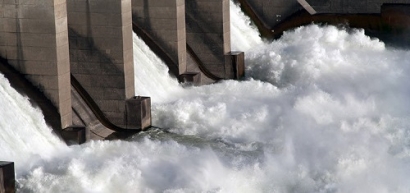
There are 3,000 proposed dams in the works from Slovenia to Greece, and recently in Albania, there has been controversy surrounding the project planned for the Balkan region, along the Vjosa river, which is widely regarded as Europe’s last wild river. The Vjosa river runs 169 miles from the Pindua mountains of northern Greece to the Adriatic Sea, and up until now, the river has been undammed.
Opposition to the proposed dams has gained momentum with help from sustainable clothing brand Patagonia with “The Save the Blue Heart of Europe” campaign. This campaign highlights the threats to booming tourism in the region and potential destruction of the richly diverse culture, history and ecology of the region known as the Blue Heart of Europe as a result of the proposed dams.
New renewable projects are often presented by opponents as threats to tourism due to changes to the scenic landscape that they may create. However, renewable projects have significant benefits to local communities that can help to alleviate the potential dichotomy opponents seek to create.
Although hydro projects can impact the environment in a variety of ways, how a project is operated can make a big difference in its degree of environmental footprint. Projects can manage flow releases from dams to ensure there is enough water in the river to support native species. Retrofitting dams with fish passage equipment can also greatly improve access to upstream habitat. Flows can also be scheduled to mimic natural flow patterns, which help transport sediment and mimic biological cues that would have been provided by the natural flow cycle.
Projects being planned in the Balkan region must educate the public on dam construction and highlight the ways the dam will have a minimal effect on wildlife and fishing communities. Moreover, the tax revenue created from renewable proposals can support local infrastructure, parks and other public amenities that ultimately bolster tourism.
Efforts like the Patagonia campaign show us what renewable companies proposing new projects are up against, and they make gaining support for new hydro projects even more difficult. Companies planning new projects will need a strong advocacy effort to counter these types of messages. In order to gain support from the public, hydro companies will need a strong campaign that highlights the ecological and economic benefits that hydropower dams will bring to the region. Here are some tactics that should be included in any hydro campaign to build public support and educate residents on hydropower projects:
Launch a Website:
Effective use of digital is an important tactic to build grassroots support amongst members of the community and public officials. The most important piece of any digital campaign is to prepare an effective website that regularly updates residents, dispels new myths and disseminates the latest information. To get a project’s message across effectively, website content should be clear and well-organized. This website should also link resources to educate viewers from third-party sources and provide downloadable petitions, fact sheets, advocacy guides, infographics and more. Encourage people to sign up in support of the project to gather a supporter database. Targeted communications that call these supporters in the database to action makes the difference! Give citizens factual information on your development project to campaign most effectively.
Harness Social Media:
Companies planning new hydropower projects must take advantage of social media. Opening dedicated social media accounts for the project creates a defined target audience to reach with regular posts. Paid advertising is cost-effective on social media platforms, and it helps to build your audience and promote both awareness of the project, boost engagement and drive website traffic to help the community learn more.
Rally Stakeholders:
From statewide environmental advocacy groups to local neighborhood associations, stakeholders should be engaged from the start. While gaining the support of the fishing community and immediate neighbors of a planned hydro project is essential, remember that stakeholders can include a variety of people and groups, such as former elected officials, chambers of commerce, downtown business groups, neighborhood groups, civic and nonprofit groups, and even education committee organizations. Start by reaching out to these groups to set up presentations to members or meeting with leaders. There are many ways stakeholders can help amplify messaging through newsletters, email blasts, social media engagement, events and more. Even if an endorsement from the group is unlikely, various members may be eager to write letters or speak in support of the project on their own.
Incorporate Video:
A video is a powerful tool that can be inserted in many platforms. Whether on the homepage of your website, in an ad or in a social media post, utilizing video captures attention. Storytelling is an important way for community members to relate to the project and potential benefits, and video helps do this in an effective manner. Include clips such as expert testimony on benefits or mitigation techniques and successful examples of hydro projects. These videos can spark conversations online and in person and build a dialogue where there may once have been one-way communication of only myths.
Ultimately, new renewable projects and tourism do not have to be at a constant dichotomy. While a new hydro project, for example, will disrupt the status quo, with a strategic communications effort, community members can begin to back the project for a timely approval that enables renewable projects and tourism to co-exist.
Al Maiorino started Public Strategy Group, Inc. in 1995. His firm has developed and managed multiple corporate public affairs campaigns in a variety of industries such as gaming, cable television, retail development, auto racing, energy and residential projects. Additionally, his firm has worked on projects in twenty states and three countries.

